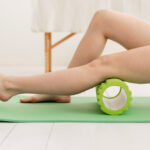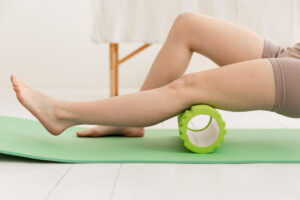By swinging a kettlebell, you can engage multiple muscle groups simultaneously. The dynamic nature of kettlebell swings makes them a staple in routines aiming for functional fitness and fat loss. Additionally, they serve as a bridge linking strength training with athletic performance, suitable for individuals of all fitness levels.
The fundamentals of a kettlebell swing
To execute a kettlebell swing effectively, begin by standing with your feet slightly wider than hip-width apart, toes pointed slightly outward. Place the kettlebell on the ground between your feet, handle facing you. Bend your knees slightly and hinge at your hips to reach down and grasp the handle with both hands, palms facing you. Keep your back flat and eyes forward.
- The lift: Tilt the kettlebell slightly towards you as a cue to engage your shoulders and back. Lift it off the ground by straightening your legs while still maintaining a hinge in your hips.
- The swing: Propel the kettlebell upward by thrusting your hips forward and straightening your body. The motion should be explosive, driving through your heels. The arms should not do much work; instead, the momentum comes from your hip thrust.
- The peak: Allow the kettlebell to rise to about chest height, keeping your arms extended. At this point, the kettlebell should feel weightless.
- The downswing: Let gravity pull the kettlebell down as you hinge your hips back into the starting position, ready to propel it upward again.
Phases of the Kettlebell Swing
Kettlebell swings encompass several phases, each critical to executing the movement effectively and safely.
The setup phase
The setup is crucial as it positions your body correctly to handle the load and trajectory of the swing. Proper alignment in the setup phase helps prevent injuries and ensures the engagement of the correct muscles.
The drive phase
During the drive phase, focus on a powerful hip thrust. The hips move from a fully hinged position to a fully extended one, driving the kettlebell upward. This phase relies heavily on the glutes and hamstrings, which are vital for generating force.
The swing phase
As the kettlebell reaches its peak, your body should be in a straight line from head to toes, resembling the position of a plank. This phase trains your body to handle and stabilize dynamic loads, engaging your core and shoulder stabilizers.
The overhead phase (Optional)
In the American swing, the kettlebell goes overhead, which is not a requirement for the standard Russian swing. If performed, this phase demands more from the shoulder muscles and requires good mobility and control to maintain form without overstressing the back.
Tips for maximizing muscle engagement
Here are some essential tips to ensure that you are engaging the right muscles throughout the movement:
- Focus on the hip hinge: The kettlebell swing is primarily a hip hinge movement. Ensure that you are not squatting during your swings. The power should come from the hips moving back and then forward, not from bending and straightening the knees.
- Engage your core: Throughout the swing, keep your core tight. This engagement helps stabilize your spine and transfers the force generated in your hips to the upper body and the kettlebell.
- Use a fluid motion: The swing should be smooth and fluid. Jerky movements can lead to improper muscle engagement and increase the risk of injury.
- Breathe properly: Exhale sharply during the upward swing and inhale during the downward phase. Proper breathing helps engage the core and maintain rhythm and momentum.
- Practice the deadlift: Since the swing is based on the hip hinge, practicing deadlifts can improve your form and strength in the hips and lower back, directly enhancing your kettlebell swing technique.
- Warm-up properly: Engaging muscles cold can lead to strains. Before swinging, perform dynamic stretches focusing on the hips, hamstrings, and shoulders to ensure they are ready to work.
If you are looking for more fitness-related advice, make sure to check out our other articles that share expert tips and tricks.
What is the ideal kettlebell weight for beginners?
Typically, the ideal starting weight varies by the individual’s strength and fitness level but generally falls within certain ranges:
- For women: A good starting weight for women new to kettlebell training is between 15 and 20 pounds. This range is heavy enough to facilitate muscle engagement and proper technique but not so heavy as to prevent correct form execution or cause injury.
- For men: Men often start with a kettlebell weighing between 25 and 35 pounds. This range provides enough resistance to build strength and power without compromising on form or safety.
Final thoughts
By understanding the mechanics of the swing and focusing on proper technique, practitioners can maximize the benefits of this versatile exercise. Emphasizing the hip hinge, engaging the core, and maintaining fluid motion are crucial for effectiveness and safety. As you continue to practice kettlebell swings, remember the importance of gradual progression in weight and technique refinement.







